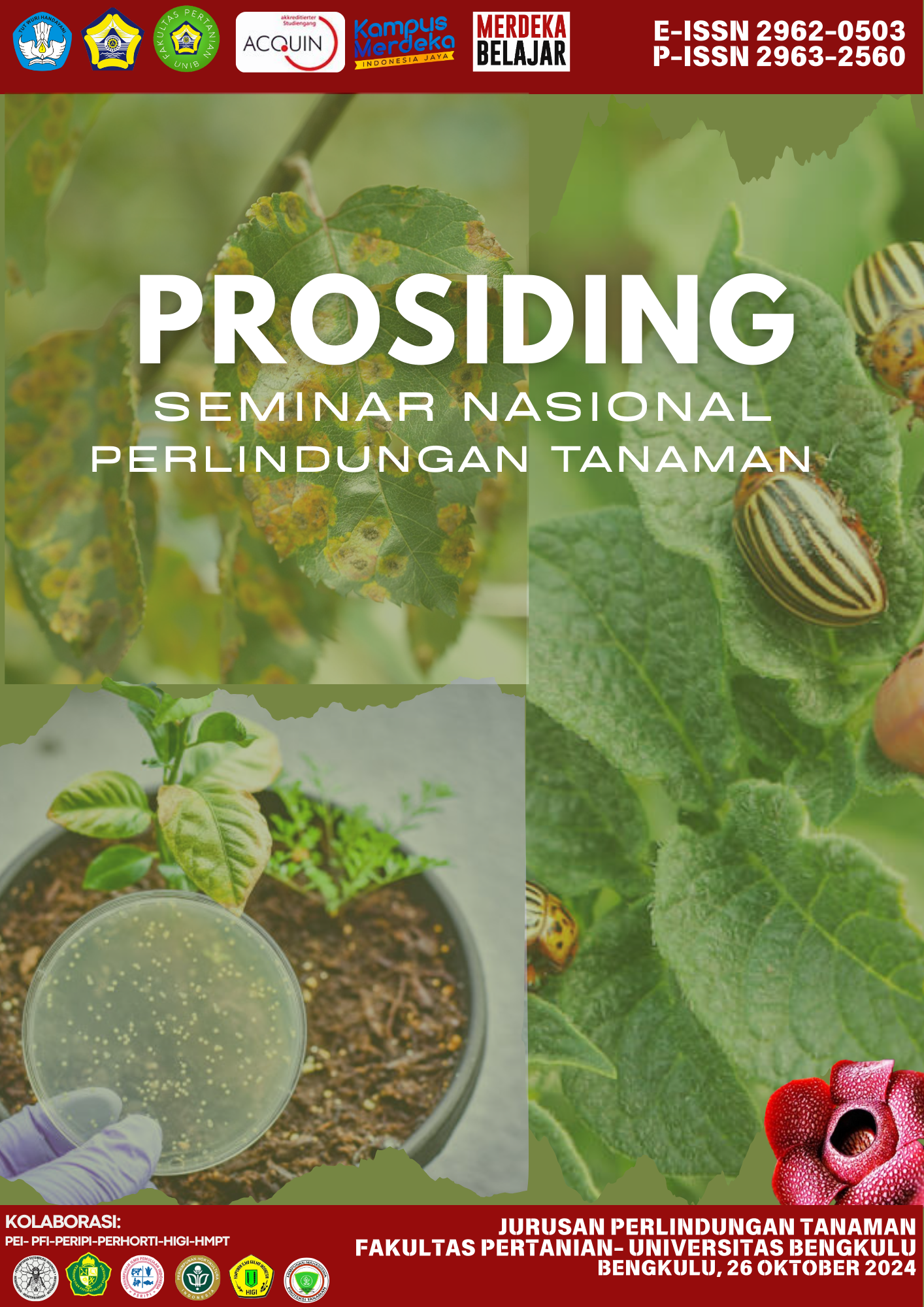HUBUNGAN SEBARAN DAN KERAGAMAN MORFOLOGI TUBUH BUAH Ganoderma spp. DI KELAPA SAWIT KABUPATEN SELUMA DENGAN LINGKUNGAN TUMBUHNYA
Keywords:
Stem Base Rot; Ganoderma spp; Distribution; genes; fruit bodyAbstract
Stem base rot disease caused by the fungus Ganoderma spp. is one of the most important diseases of oil palm plants. Oil palm plant material in Indonesia is known to have a narrow genetic background and all are known to be sensitive to Ganoderma spp. The environment where Ganoderma grows plays an important role in determining its distribution pattern. In peatlands, for example, differences in the characteristics of mineral soil and peat influence the distribution and virulence of this fungus. By understanding the relationship between genetic diversity and environmental factors, disease control strategies can be more effectively formulated. This research aims to determine that isolates from various sources can have different responses to environmental factors, such as pH and temperature, which have implications for their ability to cause disease. in Seluma Regency which has differences in the shape and color of the fruit bodies of Ganoderma spp. which was researched at the Plant Protection Laboratory, Bengkulu University. Method The sample determination in the study was based on a non-probability sampling method with a purposive sampling technique, namely a number of isolates of Ganoderma spp. who were attacked by stem rot (BPB) in the people's plantations of Seluma Regency with 5 sub-districts, in 1 sub-district there are 5 villages. The genetic diversity of the isolates was analyzed by the fungus fruit bodies in the field, selected with certain considerations or criteria from oil palm plants. The results of the research show that the distribution and genetic diversity of Ganoderma is strongly influenced by environmental factors such as temperature, pH, humidity and light and understanding these interactions. important for managing diseases caused by this fungus, especially in the context of oil palm farming which is very susceptible to infection by Ganoderma spp.







_1.png)



